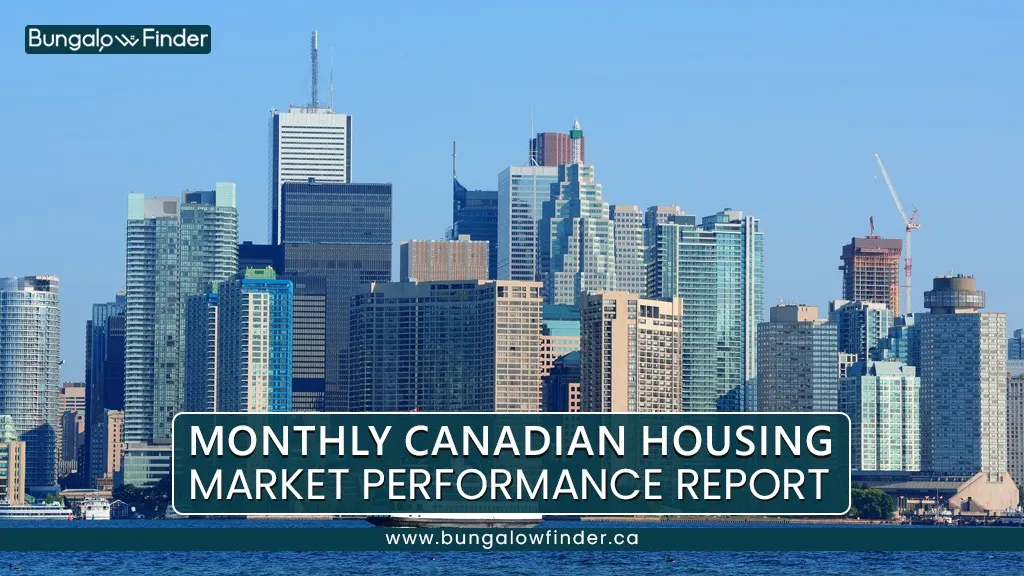Canada Housing Market Update August 2025: Sales, Prices, and Trends
Canada’s housing market in August 2025 showed balance as sales rose, listings increased, and prices held steady. See trends in Ontario, B.C., Quebec & more.

In August 2025, Canada’s housing market showed more life. Sales went up for the fifth month in a row, new listings kept coming, and the average pricemainly stayedy the same. Some areas posted solid growth, while others slowed down. Put together, the picture is of a market that’s finally finding its balance.
A Closer Look at August
The Canadian housing market showed more life this summer. August marked the busiest one since 2021, with just over 43,000 homes sold across the country. That was a modest increase from July and nearly 2% higher than last year. It’s not a boom, but it’s the first time in years that August didn’t feel sluggish.
The average price across Canada came in at about $664,000. On paper, that’s only slightly above last year, but the bigger story is in the Home Price Index. The HPI, which measures the value of a “typical” home, is still down compared to 2024. In other words, buyers are finding more flexibility, while sellers aren’t seeing runaway bidding wars anymore.
New listings crossed 195,000 in August. That’s up from last month and well above the previous year. The extra supply is keeping the market from tipping too far in one direction.
August 2025 Market at a Glance
Indicator | August 2025 | Year-over-Year |
Sales | ~43,276 | +1.9% |
Avg. Price | $664,078 | +1.8% |
HPI | Slight decline | −3.4% |
New Listings | ~195,453 | +8.8% |
Sales-to-New Listings Ratio | ~51% | Balanced |
Regional Notes
Ontario and B.C.
Ontario and British Columbia are still the toughest provinces in terms of affordability. Prices in Toronto and Vancouver didn’t shoot up, but they also didn’t fall the way many buyers were hoping. Higher borrowing costs are keeping a lid on demand. Listings are up, which helps buyers, but the overall cost of ownership remains heavy. Sellers here are adjusting expectations, often lowering prices after sitting on the market too long.
Quebec
Montreal is one of the few bright spots for sellers. The average price there jumped close to nine per cent from last year, reaching about $668,000. Sales were also up double digits. Even with more listings, demand stayed strong. Steady employment and population growth are likely behind this, keeping Montreal different from Toronto or Vancouver.
Prairies and Atlantic Canada
Markets in Alberta, Saskatchewan, and the Atlantic provinces remain steady. Prices haven’t spiked, but they haven’t slipped much either. Buyers see more affordable entry points here compared to Ontario and B.C. That’s why migration into these provinces is keeping housing activity healthy. Calgary, in particular, has drawn attention from buyers who are priced out of other big metros.
What’s Behind the Numbers
Several forces are shaping the market this summer:
Interest rates: Mortgage rates are still high, and that alone is stopping a flood of buyers. However, many expect the Bank of Canada to trim rates later this year, which could bring fresh demand.
More supply: With nearly nine per cent more listings than last year, buyers finally have choices. That eases pressure and slows price growth.
Affordability crunch: Even with modest declines in the HPI, the cost of carrying a mortgage plus property taxes and utilities keeps stretching budgets.
Regional differences: Some provinces, like Quebec, show solid growth, while others are flat. Canada’s housing market is less uniform than it used to be.
Buyers: What You Should Know
If you’re looking at Canadian homes for sale right now, you’ll find a calmer market than a year ago. More inventory means less bidding and more room to negotiate. But the flip side is affordability. High rates mean monthly payments are heavy, even if prices are stable.
For buyers, three things matter most right now:
Financing first. Get a pre-approval so you know your budget.
Compare regions. Prices in Toronto tell a very different story from those in Halifax or Calgary.
Watch the Bank of Canada. Any rate cut this fall could swing demand fast.
Sellers: Adjusting to the New Normal
For sellers, things aren’t as straightforward as they used to be. Buyers have more options now, which means pricing has to be sharper and homes have to show well. Ask too much, and the listing just sits. People scroll past quickly if it doesn’t look right. Good photos, staging, and proper marketing make a real difference.
Even so, some areas are holding stronger. In Montreal and parts of Atlantic Canada, demand is still steady. Homes that are priced in line with the market are selling without much delay.
The Risks Ahead
No housing report is complete without looking at what could change. A few risks to keep an eye on:
Economic slowdown. If job markets weaken, demand could fall.
Sticky interest rates. If cuts are delayed, affordability will stay tight.
Policy changes. Any new taxes or housing rules could reshape demand overnight.
Too much supply. In cities where listings are climbing faster than sales, prices may dip further.
What the Rest of 2025 Might Bring
Going into the fall, Canada’s housing market looks more balanced than it has in years. Buyers are finding more selection. Sellers are learning to compete. Prices aren’t soaring, but they aren’t collapsing either.
If the Bank of Canada cuts rates in September or October, expect more buyers to test the market. That could push sales higher through the winter, especially in Ontario and B.C. If rates stay put, the market may hold steady at current levels.
Overall, 2025 seems to be shaping up as a reset year — not a bubble, not a crash. Just a market adjusting to higher borrowing costs and a more cautious pace.
Final Word
August 2025 makes one thing clear — the housing rush has cooled. Sales are moving at a steady pace, listings are stacking up, and prices aren’t following one straight path. Some cities hold firm, while others are softer. Buyers have more room to breathe now, with less pressure to jump at the first showing. Sellers can still close well, but only if they’re sharp on price and willing to adjust.
The market feels less like a sprint and more like a waiting game, and the next move will likely come from whatever the Bank of Canada decides on rates.
FAQs
Q1: Is now a good time to buy a home in Canada?
Yes. Buyers finally have more choice and less competition, especially in Ontario and B.C. Affordability is still tough, but the pressure to rush into bidding wars has eased.
Q2: Which Canadian markets are strongest right now?
Montreal leads with steady price growth and strong sales. Atlantic Canada and parts of Alberta are also holding firm with healthy demand.
Q3: Are housing prices dropping across Canada?
Not everywhere. National averages are flat, but the Home Price Index is still lower than last year in many regions. Some areas are steady, others are softening.
Q4: What should sellers focus on in this market?
Realistic pricing and presentation. Homes sell faster when priced correctly and marketed well—overpricing leads to longer waits and eventual reductions.













